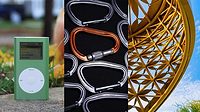An Ultimate Guide to the Safest Ways to Strip Paint

Has the time arrived for renovation projects at your home? Perhaps part of that process will be removing old paint, which can be intimidating. Thankfully, there are plenty of ways to safely strip paint.
Some paint strippers are hazardous, but knowing where to start makes things much easier. Here are the most common types of paint strippers and the best safe paint stripping techniques for different surfaces.
Paint Stripping Project Safety
Before getting started on any paint stripping project, make sure to prepare a clean space that is safely away from children and pets. Protective clothing is a good idea no matter what method you are using, including a long-sleeved shirt, gloves and closed-toed shoes. You may also need eye protection depending on the paint stripper you are using.
Additionally, it is good to know if the paint you are removing is lead-based. As a general rule, homes built before 1978, particularly those built before 1940, are likely to contain lead-based paint. If you are unsure whether or not the paint you want to remove is lead-based, the EPA recommends contacting a professional inspector to analyze it for you.
Finding a Safe Paint Stripper
There are three main types of paint stripper: solvent-based, caustic-based and manual. Solvent-based paint strippers work by breaking the chemical bond between the paint and the surface it was applied to. Caustic-based strippers break down the paint itself. Manual techniques use tools to physically chip or melt paint away. Choosing the right method will often come down to the surface you’re working with.
Check the Ingredients
It is important to carefully check the ingredients in solvent-based and caustic-based paint thinners before using them. Solvent-based paint strippers, in particular, may contain potentially harmful components that will require extra caution to handle.
One ingredient to look out for is methylene chloride, which is illegal for use in consumer paint strippers in many regions. This chemical is dangerous and should only be used by professionals, if at all. NMP, n-methyl pyrrolidone, is a similarly dangerous chemical often found in paint strippers. Both of these ingredients are hazardous enough to be lethal under certain circumstances. The EPA is working to ban them in the U.S., but you can still find paint strippers containing these hazards on store shelves today.
There are much safer paint stripper options on the market that contain other active ingredients. Dimethyl sulfoxide (DMSO) has become more popular since it has a low level of toxicity, making it a safe replacement for methylene chloride and NMP. Opting for a safe active ingredient like DMSO or a manual paint stripping method will be far safer than risking NMP or methylene chloride.
Eco-Friendly Paint Strippers
New paint strippers have been developed that are specifically designed not to harm the environment. Chemicals found in conventional paint strippers can be deadly to plants and animals. Soy- and citrus-based paint strippers are popular examples of eco-friendly options.
The great thing about these paint strippers is that they are often more effective than many conventional options. They don’t contain methylene chloride, either, making soy and citrus-based solutions safe choices. If you are bothered by odors, citrus-based mixtures may be a good way to go since they usually have a fresh lemon or orange scent.
Manual and Homemade Paint Strippers
Liquid and gel paint strippers aren’t your only options. There are some manual and homemade ways to safely strip paint, as well. For example, using a paint scraper to chip away paint is often one of the safest methods since no chemicals are involved. You will just need to carefully clean up the dust and chips from the paint as you scrape it off.
Similarly, boiling a mixture of baking soda and water can create an effective homemade paint stripper. This tactic only works on metal, but it’s still a great way to strip paint, especially if you’re looking for a cost-effective solution.
Safe Paint Stripping for Wood
Wood is one of the most common surfaces people want to strip paint from safely. It is usually an easy surface to work with, but you’ll want to ensure you don’t accidentally damage the wood itself, the grain or any staining. Generally, caustic-based options are never safe for stripping paint off wood, particularly hardwood. They can cause permanent damage and will even turn hardwood black.
Chemical Wood-Safe Paint Strippers
The best safe paint strippers for wood are usually solvent-based chemical solutions. For example, a soy-based solvent paint stripper would work fine for most types of paint and wood. You should do a patch test before using any paint stripper on wood. This ensures you’re safely stripping paint away without unintentionally harming the wood beneath. To do a patch test, place a small portion of paint stripper on a corner or edge of the painted wood and see how it responds. Some chemical paint strippers require a wait time for the full effect.
Manual Wood-Safe Paint Strippers
Sandblasting should be avoided since it is usually too harsh for wood. Instead, you may be able to use a scraper to manually strip paint off wood. This tactic works best on paint that is already in poor condition. Remember to be gentle with the scraper – you don’t want to accidentally chip or scratch the wood.
Safe Paint Stripping for Metal and Plastic
Metal and plastic surfaces are typically more resilient than wood when safely stripping paint. You will probably want to avoid using a heat gun to melt paint from metal and especially plastic. Heat guns are fairly safe and effective when used on a low setting. However, if the gun is too hot, it can warp metal and melt plastic. Otherwise, metal and plastic surfaces can stand up to most paint strippers.
Homemade Paint Stripper
One of the best safe paint strippers for metal and plastic is a homemade mixture of boiled water and baking soda. This is an especially good trick for getting paint off metal tools. To create this homemade paint stripper, find an old pot that you don’t mind permanently removing from your collection. Once you use it to make a paint stripper, it won’t be safe for cooking anymore.
Fill the pot with water and heat it until it is simmering or boiling. You’ll want to add plenty of baking soda, but no specific ratio is needed. Carefully put the tool or object you want to remove paint from in the pot and let it sit with the mixture simmering for 15 to 20 minutes. Afterward, it should be easy to peel or gently scrape away any remaining paint.
Chemical Paint Strippers
Caustic or solvent-based chemical paint strippers are usually fine for use with metal and plastic. However, it’s important to note that some caustic paint strippers can damage aluminum. Always check the ingredients list before buying to make sure you are getting a safe paint stripper free of dangerous chemicals. It’s also a good idea to work outdoors or in a well-ventilated area when stripping paint from either metal or plastic. This will help prevent illness from any fumes the process creates.
Safe Paint Stripping for Brick and Concrete
Masonry may not be the first thing that comes to mind when you think of paint stripping. Still, it is actually an important part of any home renovation or remodel, especially for historic or brick houses. For example, you may want to restore vintage masonry to its original aesthetic by removing a coat of paint from it and giving it a good cleaning.
The best way to do this is with a gentle chemical paint stripper. You can use a soft-bristled brush to safely strip paint from brickwork, concrete, limestone and other masonry surfaces without damaging them. It is important to note that acid-based options are not safe paint strippers for limestone, which is highly sensitive to acidic substances.
Light sandblasting is often fine for masonry that isn’t particularly detailed or fragile. Remember to wear a mask or other face and eye protection when sandblasting paint, though. Similarly, power-washing is not a good idea for masonry surfaces that you want to keep in pristine shape.
Stripping Paint Safely for Your Next Project
Every DIYer should know how to safely strip paint off various surfaces. Eco-friendly paint strippers are often a safe and reliable option. Just remember to keep an eye out for hazardous chemicals and practice paint stripping safety, including wearing hand and eye protection. Once you know the needs of the surface you are working with, safe paint stripping is a straightforward process.
Looking for a reprint of this article?
From high-res PDFs to custom plaques, order your copy today!






